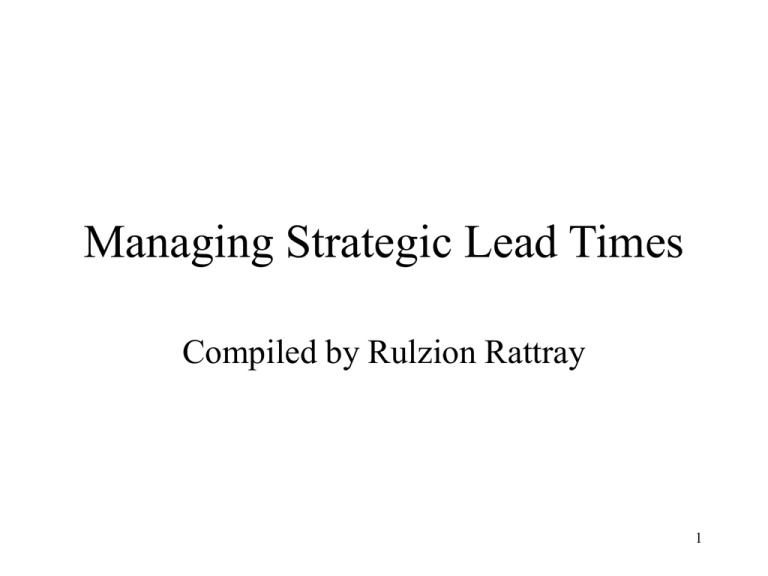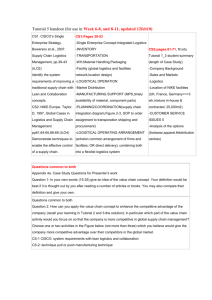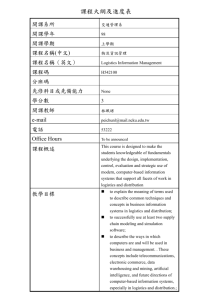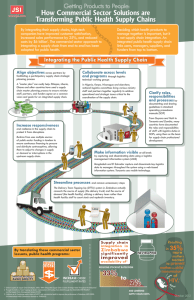Managing Strategic Lead Times
advertisement

Managing Strategic Lead Times Compiled by Rulzion Rattray 1 Time Based Competition • Price and quality important, but increasingly cost of time is crucial element in choice: – Shortening life cycles – Customers drive for reduced inventory – Volatile markets making reliance on forecasts dangerous 2 Life Cycle and Lead Time Market Sales Obsolescent Stock Late Entrant Time 3 Drive to Reduced Inventories • The drive towards Just in time delivery has had a major impact . – Responsiveness can only be achieved through time compression in supply chain. • Volatile Markets & Forecasts: – History tell; us that no matter how sophisticated the forecasting technique it will be wrong 4 The Concept of Lead Time • The time it takes for customers to receive their purchases. • The order to delivery cycle • Customers are increasingly sensitive to time. • Shortening delivery time a major potential source of competitive advantage 5 The order to delivery cycle • Order Cycle Time: – Time taken from order to delivery Short lead time major source of competitive advantage. Customer places order Order entry Order processing Order Assembly Transport Order received • Each step consumes time – If order not met from stock but manufactured lead times will be extended. 6 Cash to Cash Cycle • Time taken to convert order in to cash. • The longer the pipeline form the source of materials to the final user the less responsive to changes in demand the system will be. • Ensuring timely response to volatile demand will require a fundamentally new approach. 7 Logistics Pipeline Management • The process whereby manufacturing and procurement lead time are linked to the market. • Key managing the supply Chain as a single entity. • Common fallacy long lead times give security. The opposite is true! 8 Lead Time Gap • Problem of most organisations is time taken to procure, make and deliver is longer than the customer will wait. Procurement Manufacturing Delivery Logistics lead time Customer order cycle Lead Time Gap Order fulfilment • If logistics lead time = customers required order cycle. Forecast & inventory not required! 9 Reducing Logistics Lead Time • The visibility of the logistics process must be increased. • Fundamental questioning of why we do things the way we do. • Optimising Production Technology (OPT1): – All activities can be categorised as bottleneck (slowest activity in the chain)or non bottle necks. – Throughput of whole system is determined by bottlenecks. – Bottlenecks often associated with information flow 10 Improving Visibility of Demand • Key requirement of getting earlier warning about customer’s requirements. • Real demand may happen a lot earlier than demand penetrating the system. • How: – Improving information flow so manufacturing gets to hear about changes in the market earlier. – Postponement of commitment of product to its final form – Earlier notification of customer intentions get customers to order more frequently 11 • References 1Goldratt, E.M., (1990), “Theory of Constraints”, North River Press. • Christopher, M. & Braithwaite, A., (1989), “Managing Strategic Lead Times”, Logistics Information Management, December. • T V Ramaswamy, “Lead time-centred materials management” http://www.industrialproductsfind.com/content/archive/General/Logistics/lg150120026.jsp, accessed 19-02-2002. 12











